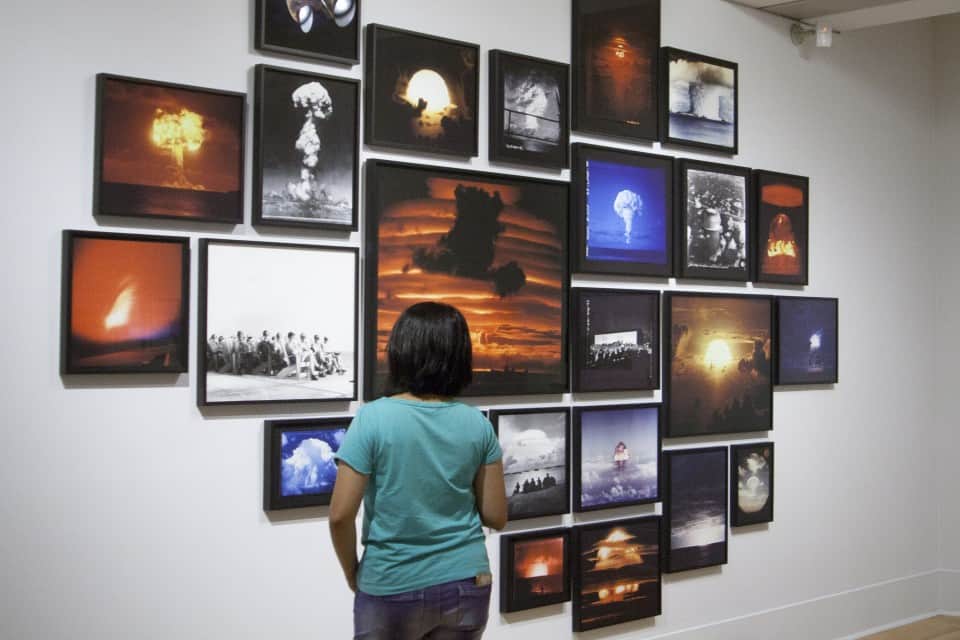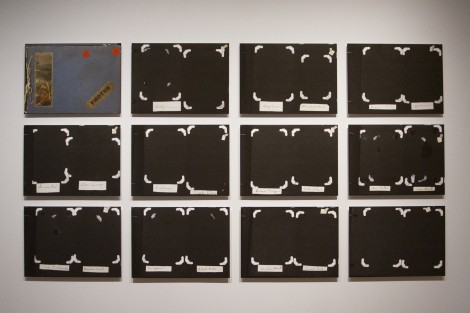[dropcap]There[/dropcap] is an unsettling irony in Robert Frank’s Hoover Dam (1956) photograph. Showing three descending postcards for sale in a shop window, the first postcard is a sweeping view of the Grand Canyon, while the Hoover Dam adorns the second. On the third, a large mushroom cloud towers over a barren desert landscape. Frank’s photo evokes an eerie sense of contrast as the postcard of the explosion pairs with celebrated American landmarks.
The Art Gallery of Ontario’s Camera Atomica exhibition, curated by UBC professor John O’Brian, features a substantial collection of nuclear photography and artifacts of the post-WWII period. From the bombing of Hiroshima and Nagasaki in 1945 to the recent 2011 disaster of Fukushima Daiichi, this exhibit doesn’t only document history, but also relates to current events.
The main exhibit room is lit by Ken and Julia Yonetani’s glowing tribute to the Fukushima power plant meltdown, featuring a green chandelier representing Canada. Made from antique radioactive glass containing nonhazardous depleted uranium, each of their 31 chandeliers is scaled to represent the size of a country’s nuclear energy program. Equally captivating are Ken Domon and Shomei Tomatsu’s photographs of Hiroshima’s survivors, which capture the personal and deeply unsettling consequences of atomic warfare. The photos — although unsettling — are worth seeing, as they depict the real, rather than abstract, consequences of nuclear war.
Camera Atomica’s vast exhibit exudes a distinctly haunting beauty. It addresses everything from the birth of positive nuclear energy to the impact of destructive weaponry. An 1895 photograph of Wilhelm Röntgen’s Nobel Prize-winning discovery of the X-Ray illustrates his wife’s hand and her wedding ring. While the picture emulates themes of love and human accomplishment, Japanese photojournalist Yoshito Matsushige’s snapshot portrays dazed survivors of the Hiroshima bombings just minutes after impact.
The exhibit showcases a variety of mediums; old books, newspapers, an old children’s toy of the atomic bomb. One particularly striking piece, Scottish-Canadian Norman McLaren’s short film Neighbours, features two men fighting to the death over the ownership of a flower. McLaren’s film displays an overt metaphor: live peacefully rather than engage in violence.
The exhibit’s dominant theme was epitomized by British scholar and philosopher Bertrand Russell. He is quoted in one of the exhibit’s glass-encrypted books saying, “The best authorities are unanimous in saying that a war with hydrogen bombs is quite likely to put an end to the human race… there will be universal death — sudden only for a fortunate minority, but for the majority a slow torture of disease and disintegration.”
Camera Atomica runs at the Art Gallery of Ontario until November 15



